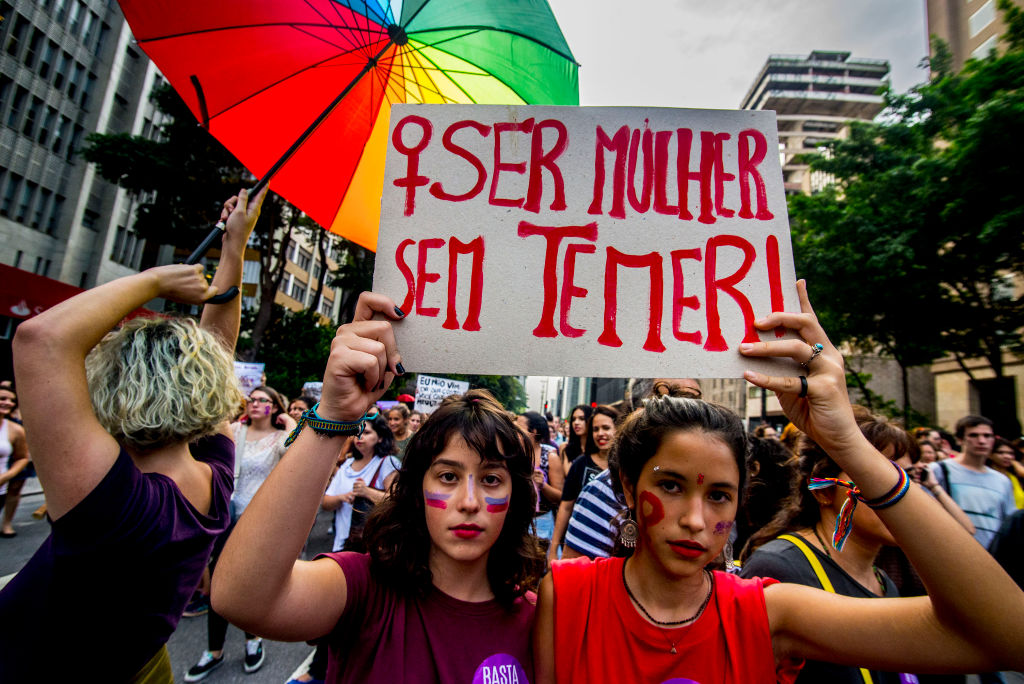What is Social Inclusion, and How is it Lacking in Latin America?
What is Social Inclusion, and How is it Lacking in Latin America?
Writing for CNN Global Public Square, AS/COA's Christopher Sabatini explores the concept of social inclusion and how it can be improved in Latin America.
Social inclusion. Nobel Prize-winning economist Amartya Sen has theorized about it. Peruvian President Ollanta Humala campaigned on it. Multilateral banks now regularly profess their commitment to it. And U.S. Secretary of State Hillary Clinton has stated that U.S. foreign policy should promote it.
But what is it? The concept of social inclusion revolves around the idea that a citizen has the right and ability to participate in the basic economic, political and social functioning of his or her society. It’s more than economic enrichment, centered on access to basic public and private goods such as health care, formal employment, education, adequate housing, political and civil rights, and economic opportunity without discrimination.
It involves more than just reducing poverty and economic inequality. And if the U.S. is going to promote it, then there must be meaningful — even measurable — differences between countries that would provide foreign policymakers with priorities or targets of opportunity.
Unfortunately, in an index of social inclusion in Latin America recently developed by the journal I publish, Americas Quarterly, the countries south of the U.S. border face a number of differences and challenges. They indicate that despite all the feel-good rhetoric about social inclusion, this is going to be difficult to tackle meaningfully as a U.S. foreign policy issue.
In the 11-country index, ranking countries’ performance across 15 indicators of social inclusion, Chile comes out on top.
On a scale of 0-100, Chile scores a 71.9, outperforming its neighbors in political and civil rights, secondary school enrollment, percent of the population living on more than $4 per day, access to adequate housing, and percent of the population with formal jobs - the latter three taking into account race/ethnicity and gender.
In other words, Chile has some of the most equal levels of access to education, economic opportunity and housing across race and gender. But truth be told, that isn’t saying much; Chile’s distribution of economic resources remain some of the most unequal among fellow members of the international club of developed nations, the Organization for Economic Cooperation and Development.
Uruguay ranks a close second with a score of 71.2. Brazil places third, but a distant third at 51.4.
The actual facts of Brazil’s inequality belie the hoopla surrounding its alleged global economic arrival. To be sure, its impressive economic growth places it among the leaders in the Americas in terms of GDP growth, and it spends more on social programs as a percent of its GDP than any other country in the study (and more than the United States). But severe differences in access to education and formal jobs (those with access to some form of state or private pension) remain.
For example, girls are about 7% less likely to be enrolled in secondary school (equivalent to grades 9-12 in the U.S.) than boys. And the differences in secondary school by race – which, in Brazil, means both those of African descent and indigenous peoples - are close to 5%.
Poverty, too, remains highly skewed by race. While 72% of Brazilians of predominantly European descent live on more than $4 per day, only 68% of Afro or indigenous Brazilians do. Access to formal jobs is no better, with 76% percent of white Brazilians enjoying jobs with pensions and only 72% of Afro or indigenous Brazilians enjoying the same.
The starkest and most alarming discoveries, though, occur at the bottom of the index. In comparison to Chile and Uruguay, which scored over 70, Guatemala and Nicaragua scored an abysmal 7.5 and 10.3, respectively. For as difficult as the race divide is in Brazil, it’s abysmal in these two countries.
In Guatemala, secondary school enrollment rates lag by 23% for children of African and indigenous descent. Poverty is also similarly skewed by race: 63% of the European descendants live on more than $4 per day, compared with only 28% for Afro or indigenous descendants.
Unfortunately, the potential for policy changes appear limited in these two countries. Both land at the bottom of regional rankings in terms of political and civil rights, and they score poorly on percentage of GDP spent on social programs. Without the potential of citizens to participate in the policy and economic opportunities that affect their lives, the unjust distortions of these societies and economies are unlikely to be addressed.
Now, more than ever, it is becoming impossible to think about and discuss the region as a whole. Some countries remain poised — albeit with challenges — to enter the ranks of the developed world, and others appear on a far more uncertain, if not dangerous, trajectory. This makes the issue of social inclusion all the more difficult as yet another agenda item on a growing list of U.S. foreign policy priorities.
Many of the social inclusion factors are embedded in centuries of institutional distortion and patterns of discrimination and politics. The U.S. should use its diplomatic muscle and resources to raise these issues and help governments address the social, racial and legal barriers to social inclusion.
But let’s not fool ourselves: this isn’t going to be easy.
Christopher Sabatini is the Editor-in-Chief of Americas Quarterly, and Senior Director of Policy at Americas Society/Council of the Americas.







